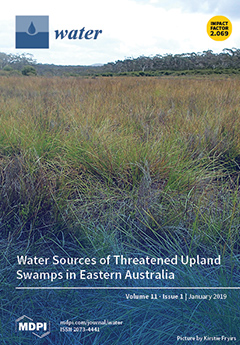Precipitation is scarce and evaporation is intense in desert areas. Groundwater is used as the main water source to develop agriculture in the oases. However, the effects of using groundwater on the ecological environment elicit widespread public concern. This study investigated the relationship
[...] Read more.
Precipitation is scarce and evaporation is intense in desert areas. Groundwater is used as the main water source to develop agriculture in the oases. However, the effects of using groundwater on the ecological environment elicit widespread public concern. This study investigated the relationship between soil salinity and groundwater characteristics in Yaoba Oasis through in situ experiments. The relationship of the mineral content, pH, and main ion content of groundwater with soil salt was quantitatively evaluated through a gray relational analysis. Four main results were obtained. First, the fresh water area with low total dissolved solid (TDS) was usually HCO
3− or SO
42− type water, and salt water was mostly Cl
− and SO
42−. The spatial distribution of main ions in groundwater during winter irrigation in November was basically consistent with that during spring irrigation in June. However, the spatial distribution of TDS differed in the two seasons. Second, soil salinization in the study area was severe, and the salinization rate reached 72.7%. In this work, the spatial variability of soil salinization had a relatively large value, and the values in spring were greater than those in autumn. Third, the soil in the irrigated area had a high salt content, and the salt ion content of surface soil was higher than that of subsoil. A piper trilinear diagram revealed that Ca
2+ and K
+ + Na
+ were the main cations. SO
42−, Cl
−, and HCO
3− were the main anions, and salinization soil mainly contained SO
42−. Fourth, the changes in soil salt and ion contents in the 0–10 cm soil layer were approximately similar to those of irrigation water quality, both of which showed an increasing trend. The correlation of surface soil salinity with the salinity of groundwater and its chemical components was high. In summary, this study identified the progress of irrigation water quality in soil salinization and provided a scientific basis for improving the oasis ecosystem, maintaining the healthy development of agriculture, managing oasis water resources, and policy development. Our findings can serve as a reference for other, similar oasis research.
Full article





